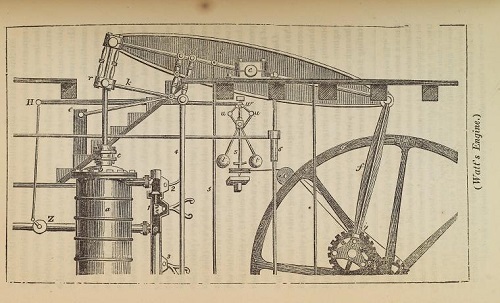What Would We Do Without Division of Labor?
February 24, 2022

By doing tasks in a predictable manner, one becomes a master of his own craft and starts to enjoy the fruits of his work, becoming more and more satisfied as time goes by. He or she starts to seek ways to achieve greater efficiency and in doing so, innovation happens, and sometimes new discoveries occur.

By doing tasks in a predictable manner, one becomes a master of his own craft and starts to enjoy the fruits of his work, becoming more and more satisfied as time goes by. He or she starts to seek ways to achieve greater efficiency and in doing so, innovation happens, and sometimes new discoveries occur.
Division of labour and specialisation are at the heart of development of modern world. In the Wealth of Nations, the central theme of the first three chapters, is this revolutionary step towards greater prosperity and wealth, for workers, producers, and everyday consumers. Adam Smith observed that it provides an opportunity for performers of any kind of work to specialise and to become more efficient or more effective in doing their tasks. It either leads to them doing their working assignments better in terms of a larger quantity of work done for the same amount of time or better in terms of the same quantity for a lesser amount of time. Through performing tasks, workers themselves observe their processes and naturally continue to try to find more effective ways of performing them.
Adam Smith claims that at the core of every innovation is a desire to make things run better, more accurate, or improved in any sense. By doing tasks in a predictable manner, one becomes a master of his own craft and starts to enjoy the fruits of his work, becoming more and more satisfied as time goes by. He or she starts to seek ways to achieve greater efficiency and in doing so, innovation happens, and sometimes new discoveries occur.
James Watt was one of the most prominent Scots of the Enlightenment who helped create the modern world. He was in fact introduced to the renown venture capitalist, Matthew Boulton, by Adam Smith himself, and in turn Boulton financed what would be an improved version of steam pipe engine, created by Watt.
Although its roots can be traced to mid 18th century, it wasn’t until 1876 that the typewriting machine was invented by former journalist Christopher Latham Sholes. This wasn’t the invention of a single author, but one that was modified and improved by many throughout the period.
Henry Ford, owner of Ford Motor Company, implemented the idea of division of labour through his assembly line, enabling the mass production of Ford’s T model.
A version of Ford’s innovation was tried later, with great success, by two brothers, Mack and Dick, owners of a then unknown 1950’s restaurant in California. By automating the process of food preparation and delivery, they enabled their restaurant, McDonald’s, to deliver standard quality products in every location company operates today throughout the world.
Steve Wozniak puzzled over how he could make computers smaller and convenient for everyday consumers to use them. At the time, in the mid 70’s, the market for personal computers didn’t even exist. Teamed up with the creative genius of Steve Jobs, the two created one of the most famous companies in the world today, Apple.
Division of labour isn’t strictly tied to the manufacturing world. In financial institutions, like commercial or investment banks, different departments are doing different tasks. Lewis Ranieri of Solomon brothers thought about the way the bank could improve its mortgage and bond business. As a result, he came up with the idea for mortgage-backed securities, which enabled banks to earn major profits with low risk.
Examples in technology are almost too numerous to count. When they first appeared, mobile phones were the size of a land phone. Later they become much smaller with greatly enhanced functions. Smartphones today have the capabilities of a personal computer. Producers use the advantages of specialisation and acquire materials and parts from different suppliers. This leads to the creation of supply chains, which has led to cost reduction advantages in comparison to the production of every part on its own within the premises of the end producer.
Internet service providers were initially offered their service at a very low speed. (Remember dial up?) Through experimentation and the introduction of optic cables, this service become far more advanced.
It is from decades of long research, through tests and trials, that mRNA vaccines came into being, as a new, safer and more efficient way of treating respiratory deceases such as COVID.
Division of labour and specialisation lay the ground for improvement in all different branches of work, often leading to innovations and inventions. Adam Smith was among the first to note that this also leads to economic growth, contributing to the generation of wealth and general prosperity.
Want to Read More?
Adam Smith and J.B. Say on the Division of Labor | Online Library of Liberty
Rachel Ferguson’s Live a Happier Life with the Concept of Division of Labor | Adam Smith Works
A three-part essay series on Division of Labor by Michael Munger | Adam Smith Works
Explore Smith's most famous example in our Interactive Pin Factory | Adam Smith Works
Want to Read More?
Adam Smith and J.B. Say on the Division of Labor | Online Library of Liberty
Rachel Ferguson’s Live a Happier Life with the Concept of Division of Labor | Adam Smith Works
A three-part essay series on Division of Labor by Michael Munger | Adam Smith Works
Explore Smith's most famous example in our Interactive Pin Factory | Adam Smith Works